Search Results
Filters
Advanced Search
209 Results
-

Debug Like a Pro: VHDL Testbenches with OSVVM, UVVM, & UVM in Questa One Sim
Webinar - Dec 03, 2025 by Mariam Maurice
This webinar explores the debugging capabilities and best practices across the three leading VHDL verification (OSVVM, UVVM, UVM) frameworks.
-
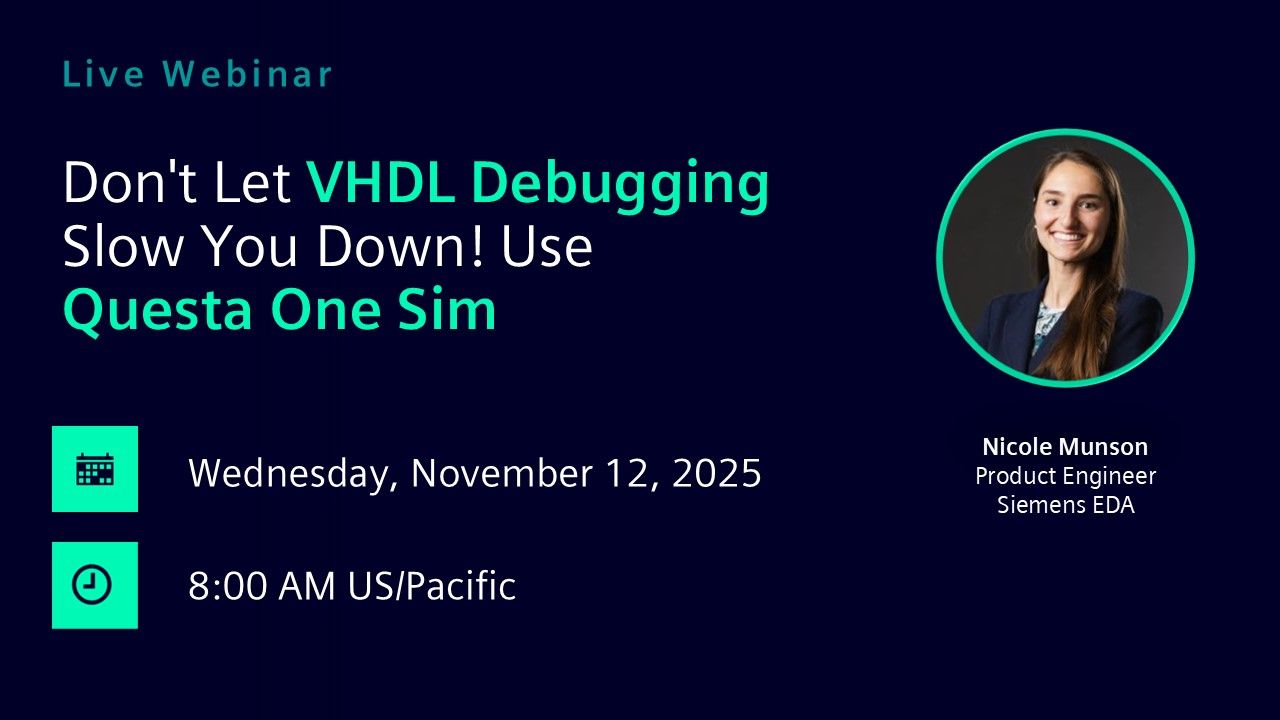
Don't Let VHDL Debugging Slow You Down! Use Questa One Sim
Webinar - Nov 12, 2025 by Nicole Munson
In this webinar, you will learn how Questa One Sim empowers VHDL designers to dramatically enhance their debugging productivity. We'll move beyond basic simulation viewing and dive into advanced features designed to pinpoint issues faster, understand design behavior more intuitively, and streamline your entire VHDL RTL debug workflow.
-
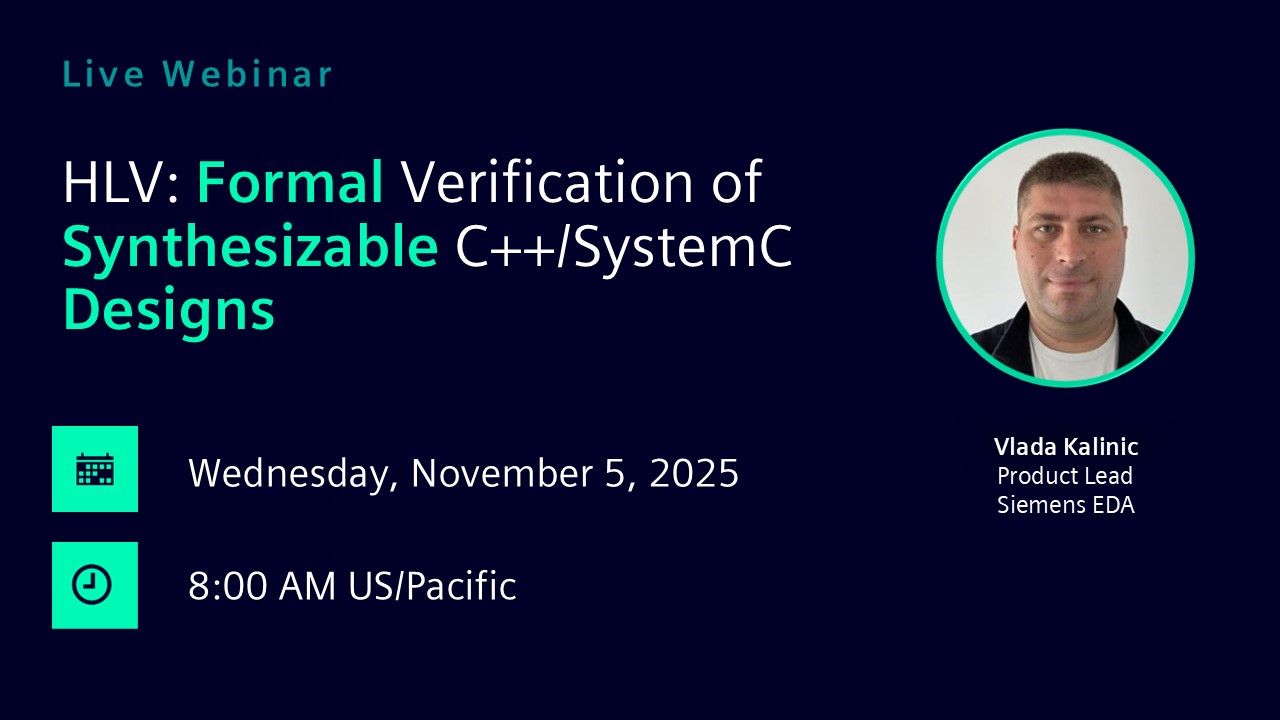
HLV: Formal Verification of Synthesizable C++/SystemC Designs
Webinar - Nov 05, 2025 by Vlada Kalinic
Formal check tools are difficult to be analyzed on generated RTL (as the errors cannot be correlated to HLS source code) Catapult Formal/Onespin SystemC help to overcome this challenge. Under HLV there are several apps, to verify and clean C++ HLS code before running HL Synthesis and then apply equivalency between C++ and RTL to guarantee that golden C++ is equivalent with final RTL design.
-

Improving Verification Productivity Using Questa One Sim
Webinar - Oct 23, 2025 by Karim Ameziane
This webinar is essential for verification engineers and managers looking to overcome the challenges of increasing design complexity and achieve superior verification efficiency and faster time-to-market with Siemens' Questa One Sim. Furthermore, the webinar will showcase Questa One Sim's cutting-edge debugging tools. Experience how advanced capabilities like Protocol Debug, and X-Debug enhance productivity, enabling you to find bugs faster.
-

Ultra Accelerator Link (UALink) Verification: A Deep Dive with Siemens Avery Verification IP
Webinar - Oct 15, 2025 by Justin Bunnell
In this webinar, you will be introduced to the UALink protocol, focusing on its architecture, key features that enable scalable AI systems, and critical verification challenges. We will then explore the essential capabilities of Siemens Avery UALink Verification IP, designed to ensure complete and efficient verification of complex UALink-based accelerator designs.
-
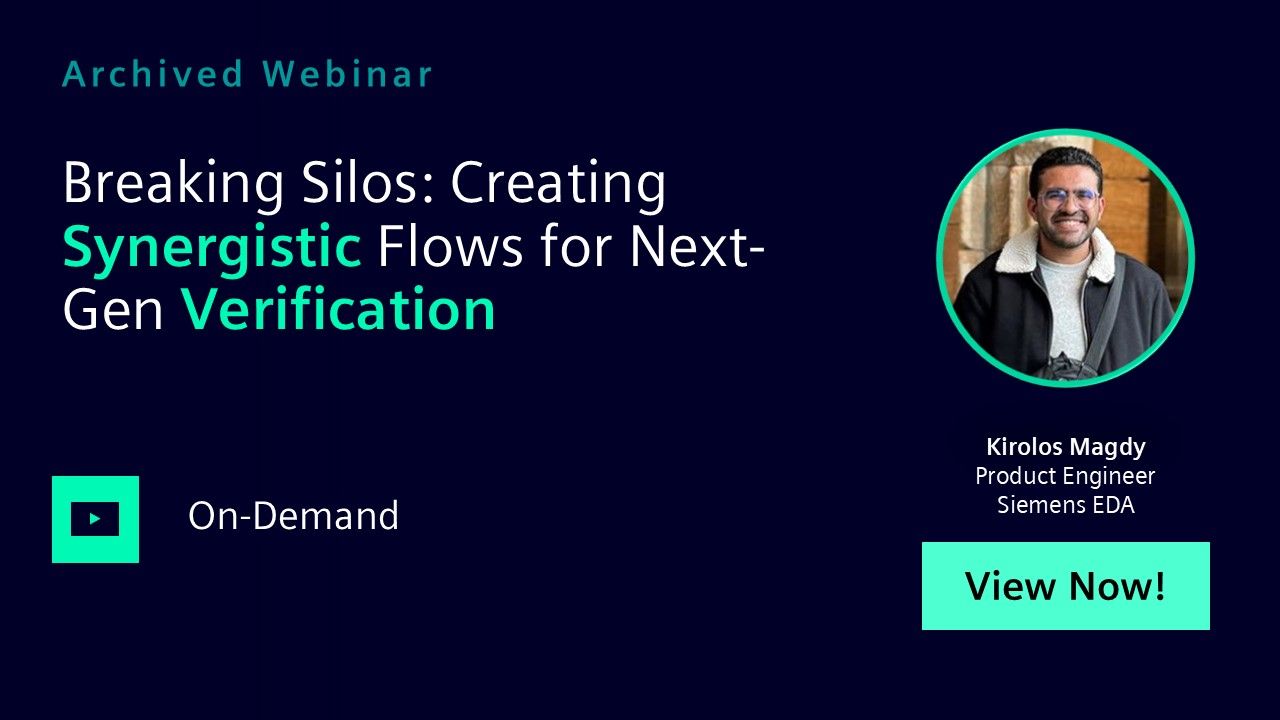
Breaking Silos: Creating Synergistic Flows for Next-Gen Verification
Webinar - Oct 08, 2025 by Kirolos Magdy
In this webinar, through practical demonstrations and real-world examples, you'll see how next-generation verification goes beyond traditional approaches - enabling teams to break down silos, accelerate design cycles, and achieve higher quality results through intelligent automation and collaborative workflows.
-
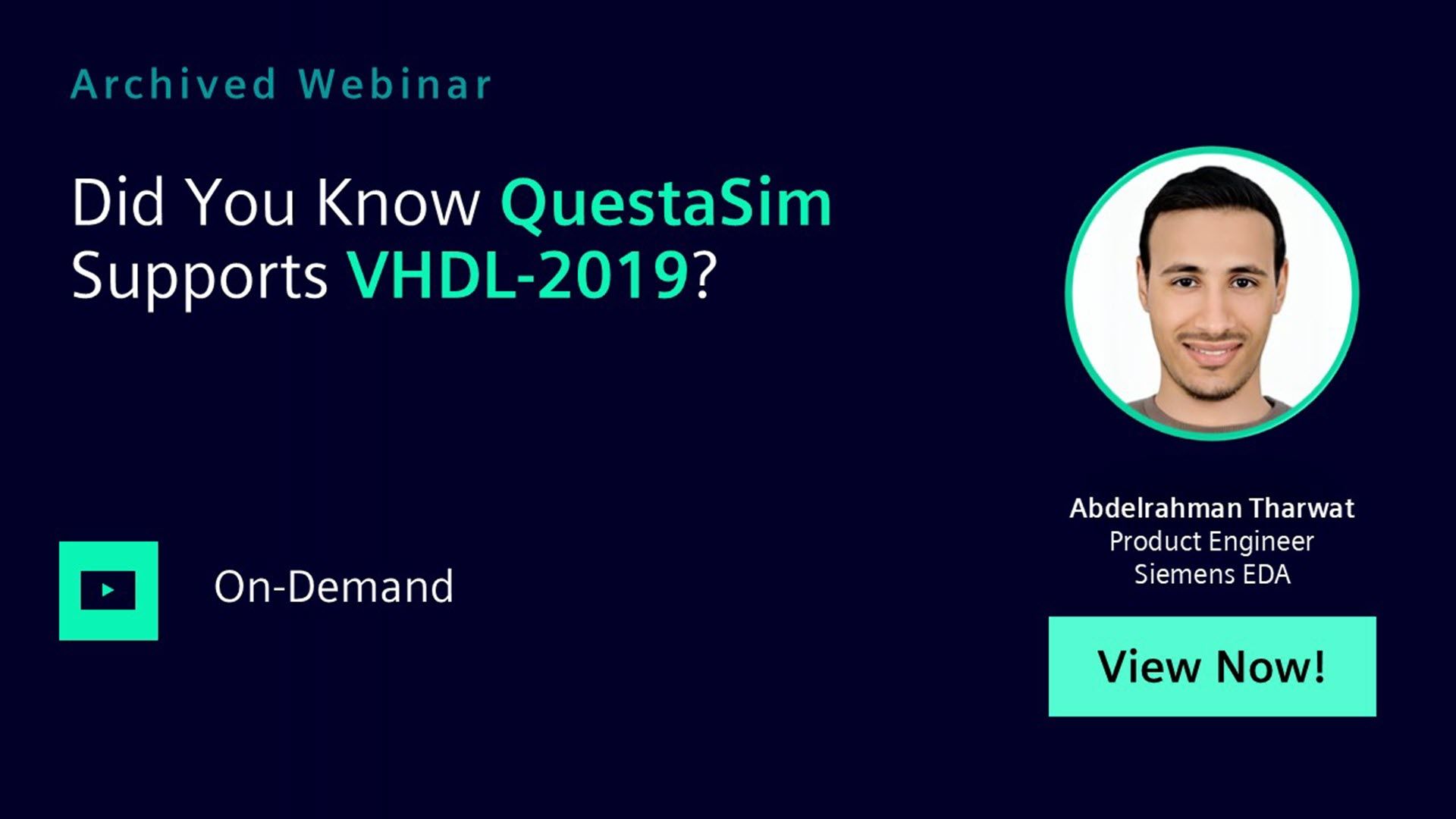
Did You Know QuestaSim Supports VHDL-2019?
Webinar - Oct 01, 2025 by Abdelrahman Tharwat
In this webinar, we will explore the VHDL-2019 supported features in QuestaSim such as; enhancing your VHDL testbench, accessing the host environment, assertion reporting, view modes for design configuration optimization and more.
-
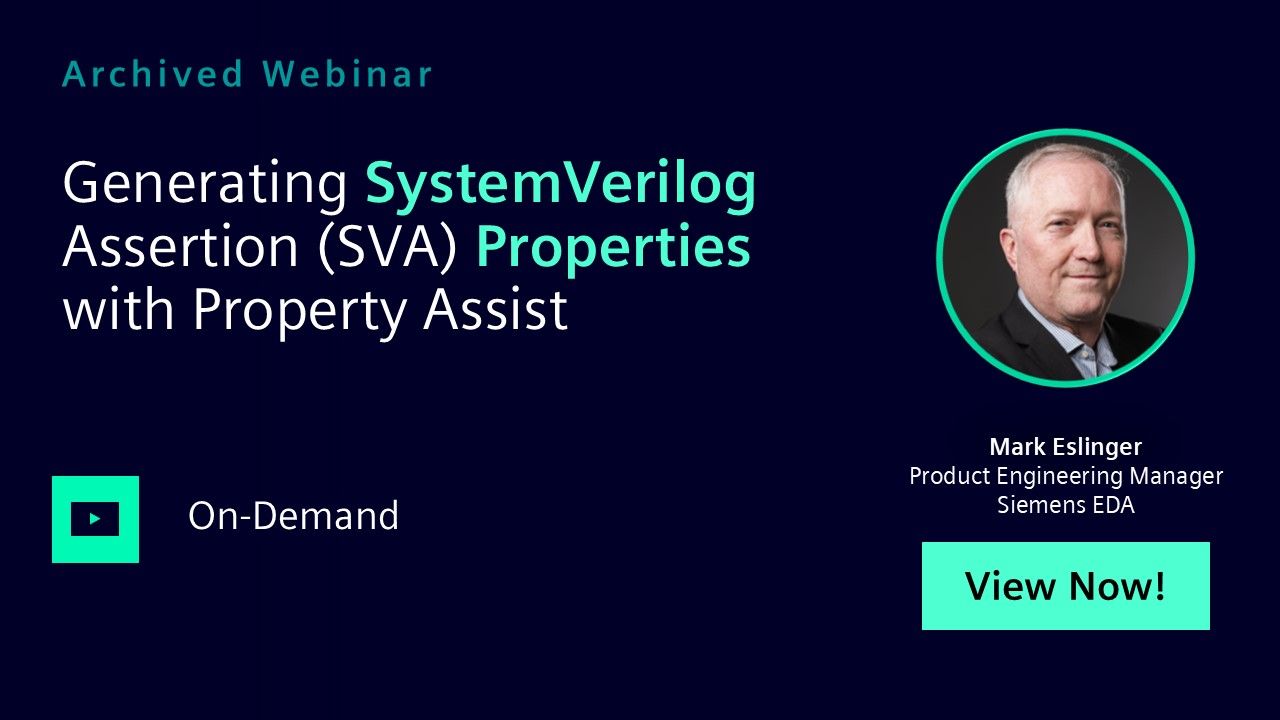
Generating SystemVerilog Assertion (SVA) Properties with Property Assist
Webinar - Jul 16, 2025 by Mark Eslinger
In this webinar, you will learn how Questa Property Assist automatically generates SystemVerilog Assertions (SVA) that describe the behavior of hardware designs, using AI technology. In addition, Property Assist turns user prompts into optimized LLM prompts, retrieves LLM provided solutions, and presents the best generated SVA solutions for the user.
-

Accelerating Functional Coverage with Questa One CX
Webinar - Jun 18, 2025 by Chris Crile
This webinar introduces Questa One Sim CX, an innovative coverage-driven simulation solution that revolutionizes SystemVerilog UVM verification workflows.
-
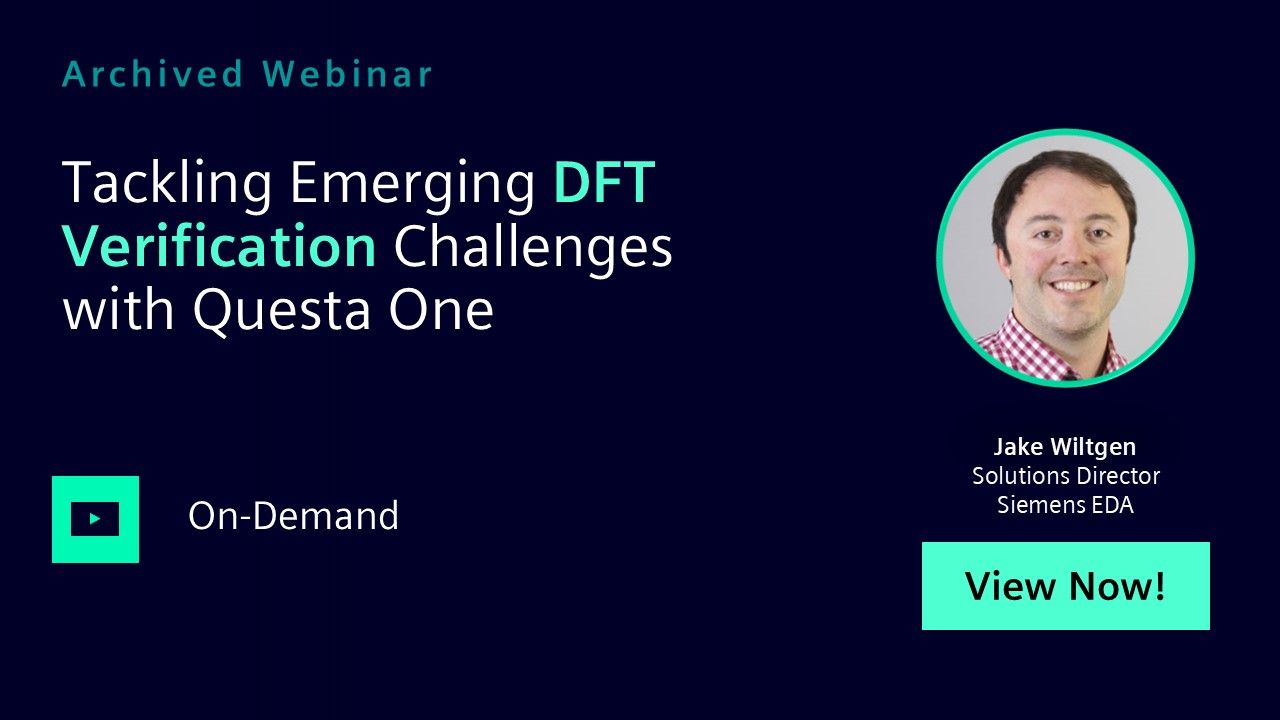
Tackling Emerging DFT Verification Challenges with Questa One
Webinar - Jun 12, 2025 by Jake Wiltgen
In this webinar, you will learn how the Questa One DFT Verification solution, combined with Tessent Silicon Lifecycle Solutions delivers an evolution in user experience and performance to address these emerging verification challenges.
-

Enhancing Automotive Safety Verification Using Questa One Sim FX
Webinar - Jun 04, 2025 by Ann Keffer
In this webinar, you will learn how Questa One Sim FX optimizes fault campaigns through advanced features including fault list optimization and test ranking capabilities. The webinar will demonstrate the tool's seamless integration with existing testbench environments (UVM and native), eliminating the need for extensive modifications and reducing setup overhead.
-

Streamlining Requirements Traceability using Questa Verification IQ Testplan Author
Webinar - May 28, 2025 by Nishtha
In this webinar, discover how Questa Verification IQ Testplan Author seamlessly integrates with Application Lifecycle Management tools (such as Siemens Polarion and Jama Connect) to deliver a powerful, collaborative traceability solution that transforms your verification workflow.
-
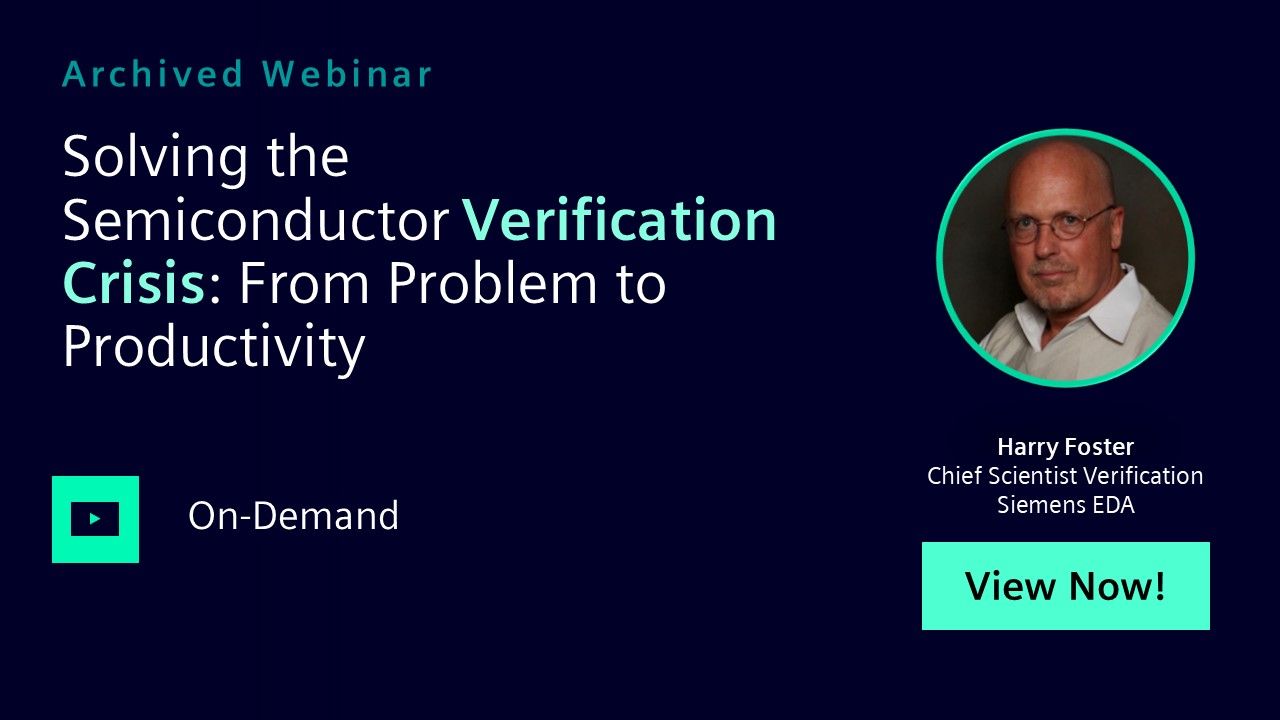
Solving the Semiconductor Verification Crisis: From Problem to Productivity
Webinar - May 21, 2025 by Harry Foster
The semiconductor industry is facing Verification Productivity Gap 2.0 —a crisis driven by mounting design complexity, growing security demands, and workforce shortages. Traditional verification methods alone can’t keep up. This webinar explores the latest industry trends and challenges shaping functional verification, then introduces Questa One —Siemens’ smart verification platform engineered to meet these demands head-on.
-

Enhancing Defect Coverage in Design for Testability (DFT) with Functional Fault Grading
Webinar - May 07, 2025 by Ann Keffer
In this webinar, you will learn how functional fault grading enhances defect coverage and the key advantages of integrating functional fault grading into DFT processes, specifically addressing faults untestable by scan tests.
-
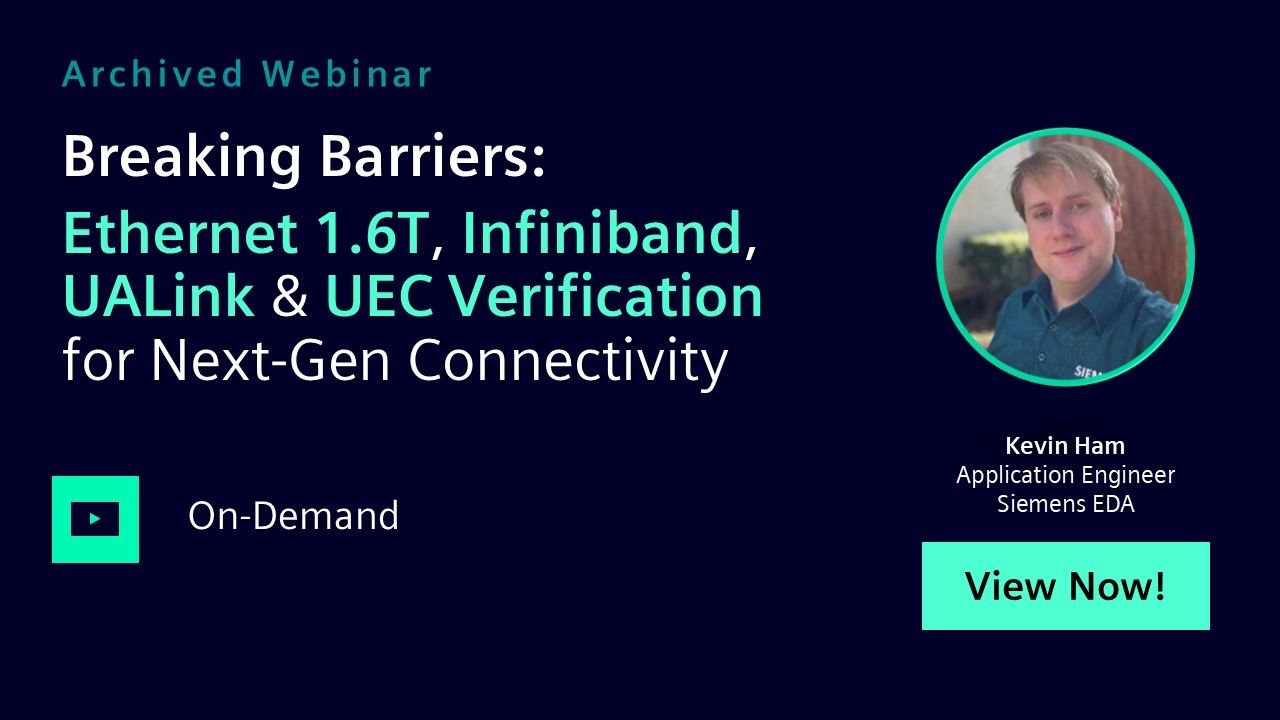
Breaking Barriers: Ethernet 1.6T, Infiniband, UALink, and UEC Verification for Next-Gen Connectivity
Webinar - Apr 30, 2025 by Kevin Ham
This session introduces Avery Verification IP for Ethernet 1.6T, Infiniband, UALink, and UEC, providing essential tools to verify complex designs for next-generation connectivity. You will gain insights into the key challenges and innovations in Ethernet 1.6T, the latest high-speed Ethernet standard, and learn how Avery's Verification IP accelerates design validation with comprehensive protocol coverage, scalability, and advanced debugging capabilities.
-
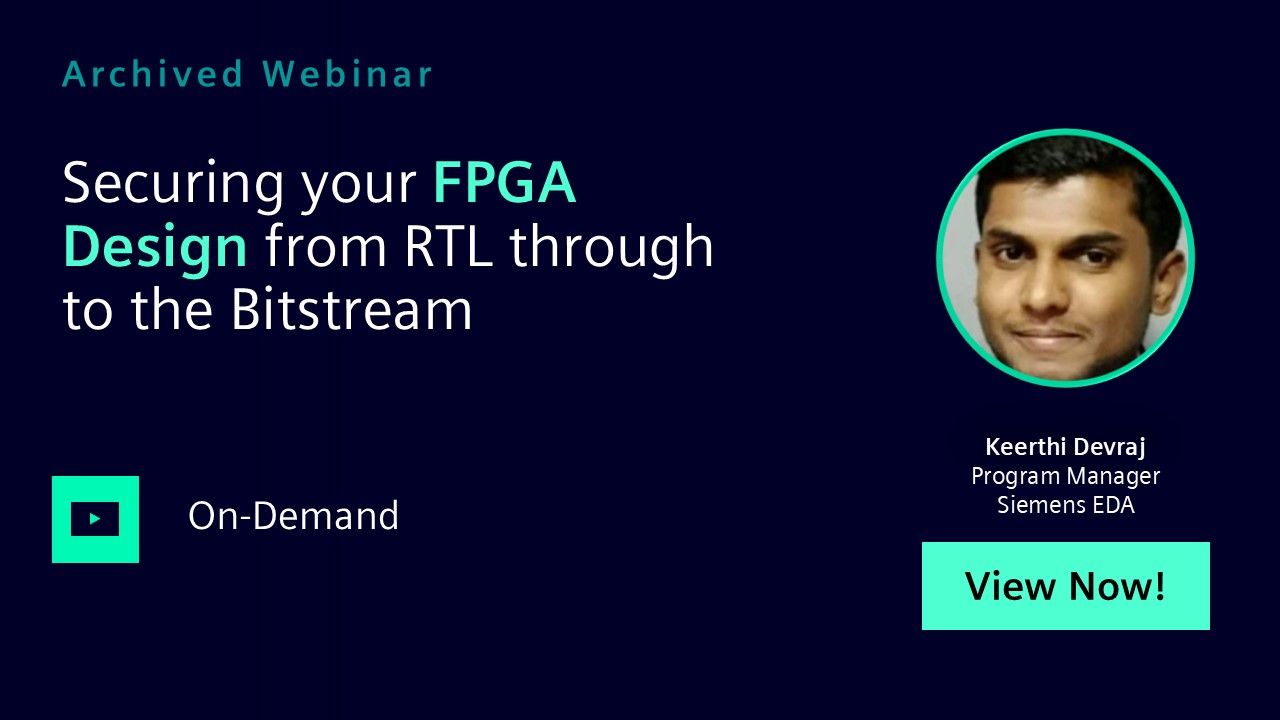
Securing your FPGA Design from RTL through to the Bitstream
Webinar - Apr 23, 2025 by Keerthi Devraj
This session will briefly introduce practical tools such as the Siemens Analyze Architecture and VerifySecure technologies, highlighting how they support the overall security strategy. In addition, we will introduce Bitwise (powered by Red Balloon Security) as a point-and-click assurance tool that delivers rapid security analysis and hardening of FPGA bitstreams.
-
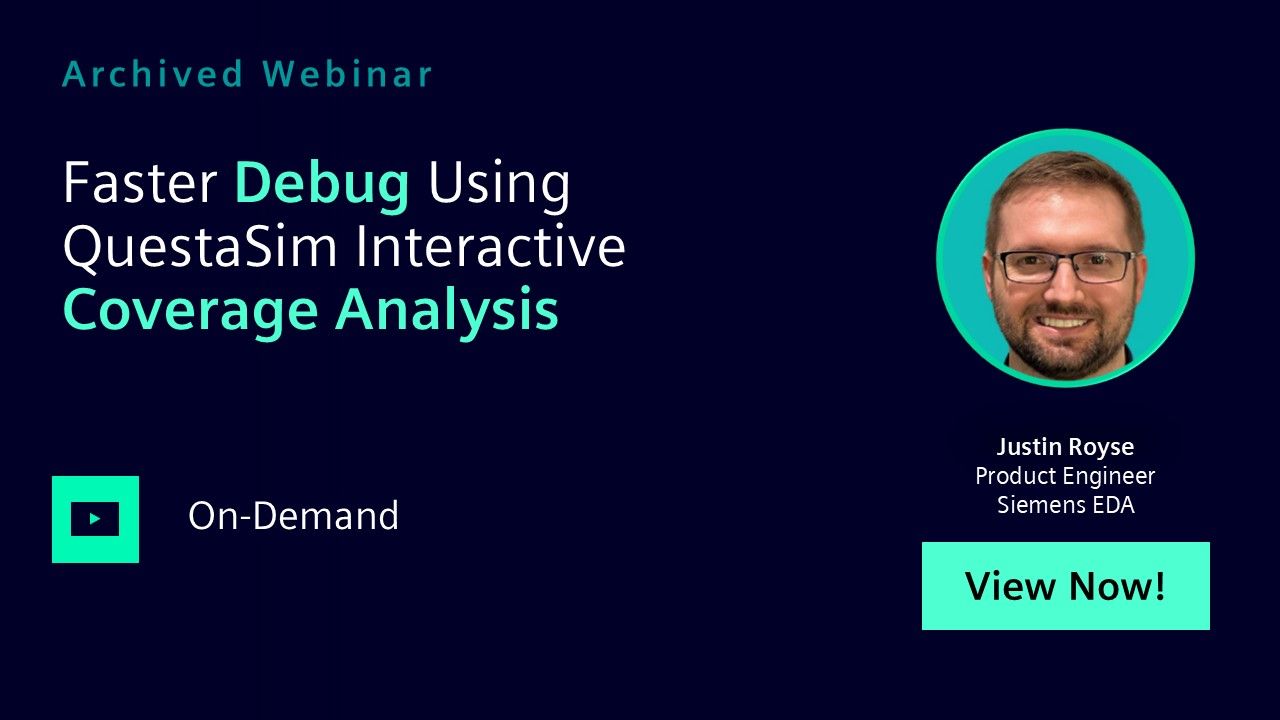
Faster Debug Using QuestaSim Interactive Coverage Analysis
Webinar - Apr 16, 2025 by Justin Royse
This session we will explore the power of debugging code and functional coverage while simulation is still running. Learn how interactive coverage analysis brings another dimension to RTL and SV/UMV debugging which can lead to significant productivity boost and faster design and testbench bring up.
-

Smart Debug: Accelerate Root Cause Analysis and Reduce Debug Turnaround Time with Questa Verification IQ Regression Navigator
Webinar - Apr 03, 2025 by Mark Carey
This session will explore the powerful Smart Debug features within Siemens EDA’s Questa Verification IQ Regression Navigator - a next-generation, collaborative browser-based data-driven verification solution. Leveraging advanced machine learning technology, these features enable you to accelerate root cause analysis and reduce debug turnaround time.
-
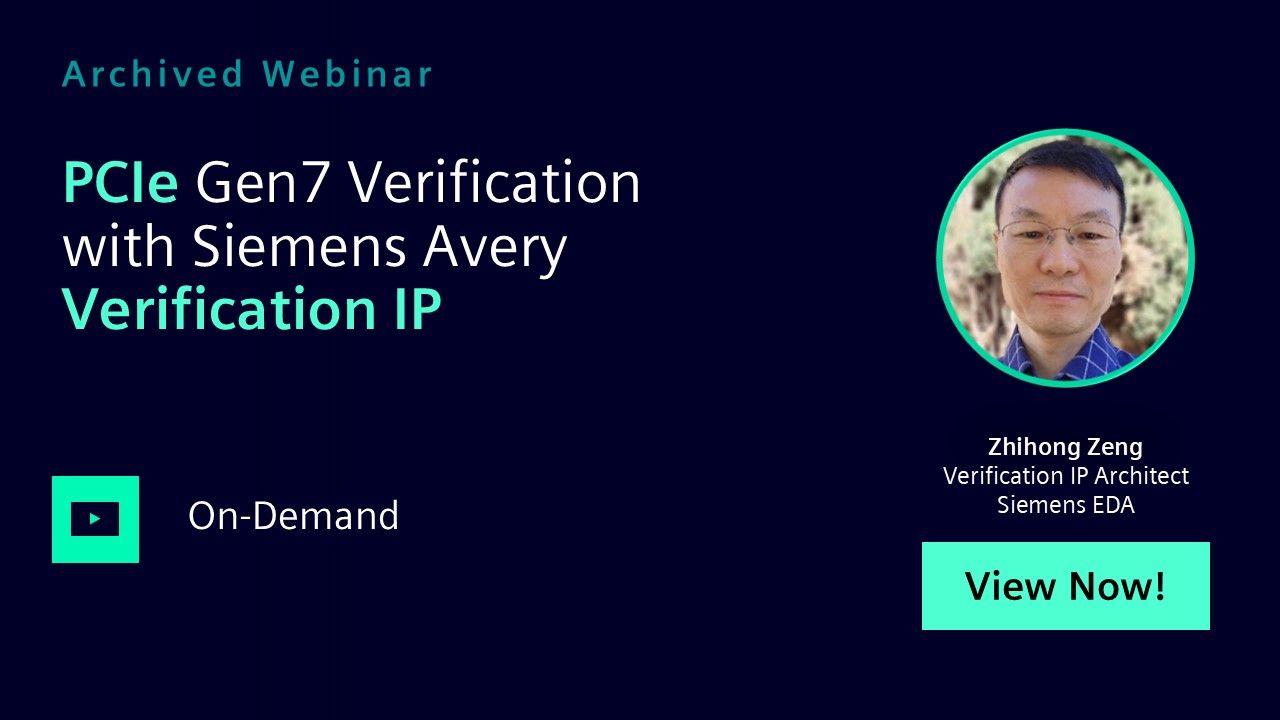
PCIe Gen7 Verification with Siemens Avery Verification IP
Webinar - Mar 26, 2025 by Zhihong Zeng
This session will delve into the advanced features of Avery’s PCIe Verification IP, including dynamic testbench creation, sophisticated traffic generation, error injection, and protocol compliance checks.
-

Safety Analysis for Automotive Chips Based on ISO 26262
Webinar - Mar 12, 2025 by Jyothy M Jaganathan
In this webinar, we will be focusing on the usage of SafetyScope at various stages of a safety design cycle: architectural phase, RTL phase and post-synthesis phase. We will also demo showing initial FIT calculations as well as the ISO 26262 metrics, what if analysis and exploration to reach ASIL B safety.
-
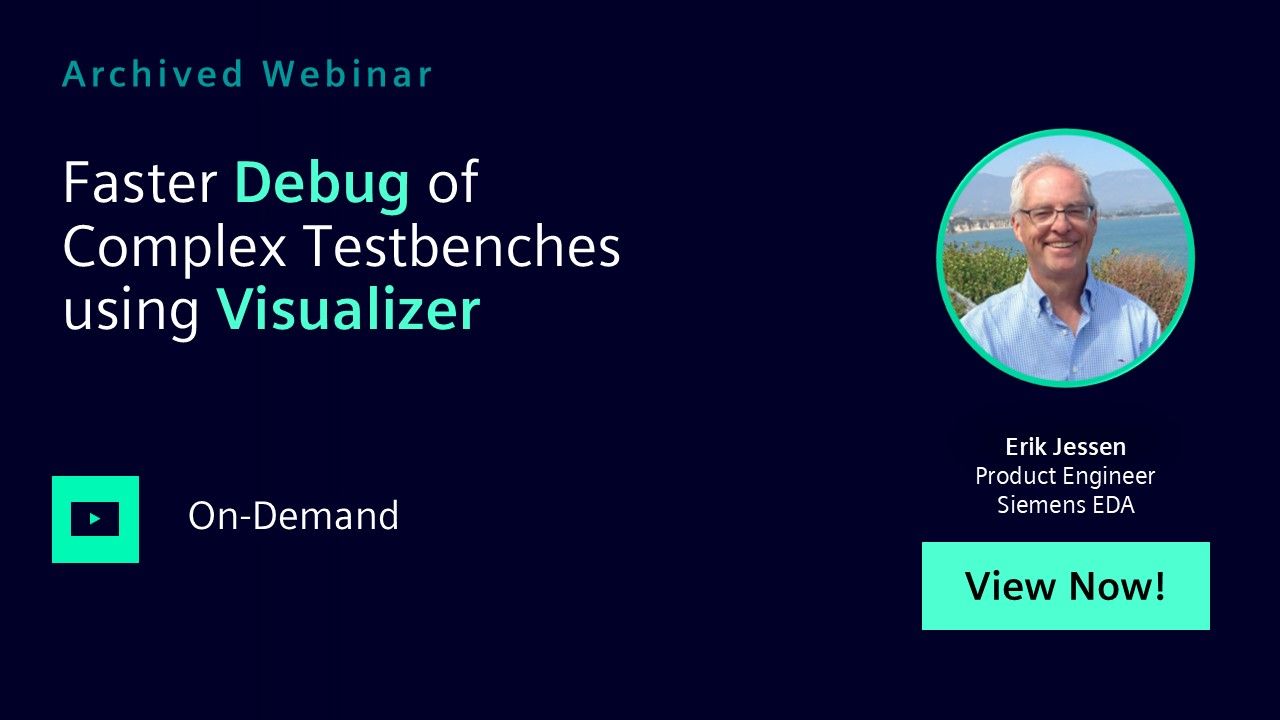
Faster Debug of Complex Testbenches using Visualizer
Webinar - Mar 05, 2025 by Erik Jessen
In this webinar, we will explore essential capabilities such as basic line stepping, dynamic variable monitoring, constraint debugging, and UVM topology visualization. In addition, you will learn how to effectively identify and resolve issues in complex testbenches, streamline workflows, and enhance overall verification efficiency.
-
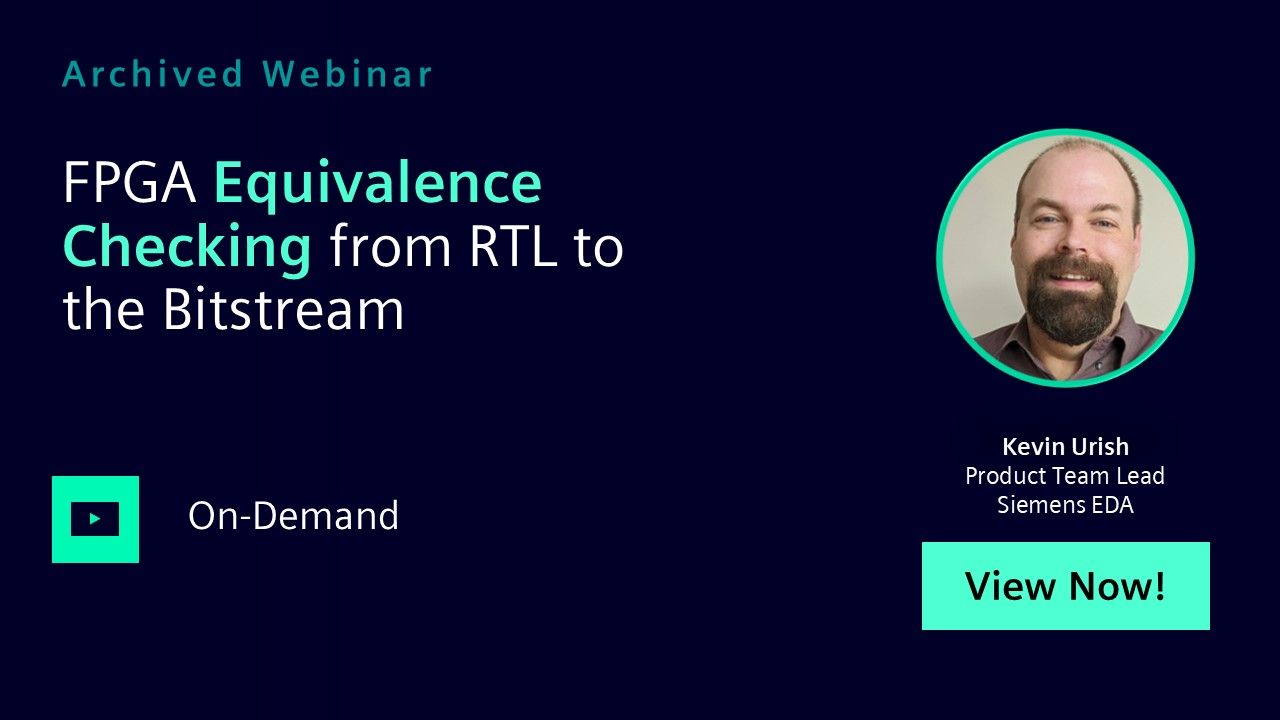
Improving FPGA Safety and Security Compliance: FPGA Equivalence Checking from RTL to the Bitstream
Webinar - Feb 19, 2025 by Kevin Urish
Security and safety policies across various domains such as aerospace and defense, embedded security, and automotive safety have been updated to require an FPGA verification chain spanning from verified HDL source, extending throughout the FPGA implementation tool chain, and culminating with the FPGA bitstream. In this session, you will learn comprehensive solutions to tackle current and emerging requirements for FPGA designs.
-

Smart Regression: Optimize Regression Efficiency Using Questa Verification IQ Regression Navigator
Webinar - Feb 12, 2025 by Mark Carey
In this webinar, we explore the powerful smart regression features of collaborative browser-based data-driven verification. You will then learn how to harness the full potential of Questa Verification IQ to boost efficiency and productivity in your verification efforts, take advantage of automating the detection of design differences and optimize regression time by maximizing compute resources.
-

FPU Verification with an Alternative to C-reference Model
Webinar - Feb 05, 2025 by Gerardo Nahum
In this webinar, you will be introduced to the Questa FPU application, explaining how it can quickly detect design inconsistencies and reduce verification time from months to days (based on an easy setup process). You will also learn how Questa Formal Verification IP (VIP) for the AMBA protocol ensures that designs incorporating AMBA adhere strictly to the protocol; all without the need for simulation.
-
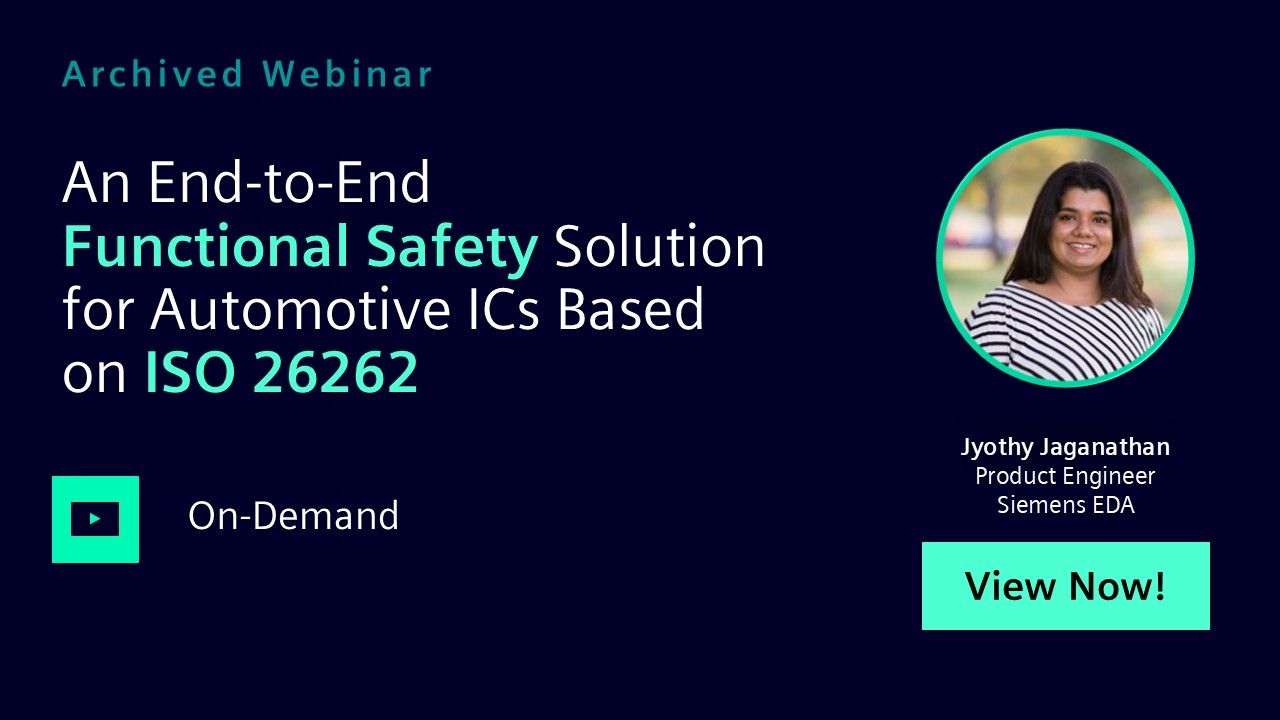
An End-to-End Functional Safety Solution for Automotive ICs Based on ISO 26262
Webinar - Jan 29, 2025 by Jyothy M Jaganathan
In this webinar, you will learn more about Siemens EDA functional safety concepts and tool flow. In addition, we will walk you through our closed-loop solution; from requirements gathering, FMEDA, safety analysis, fault injection and back to merging the results to generate the work products necessary for certification.